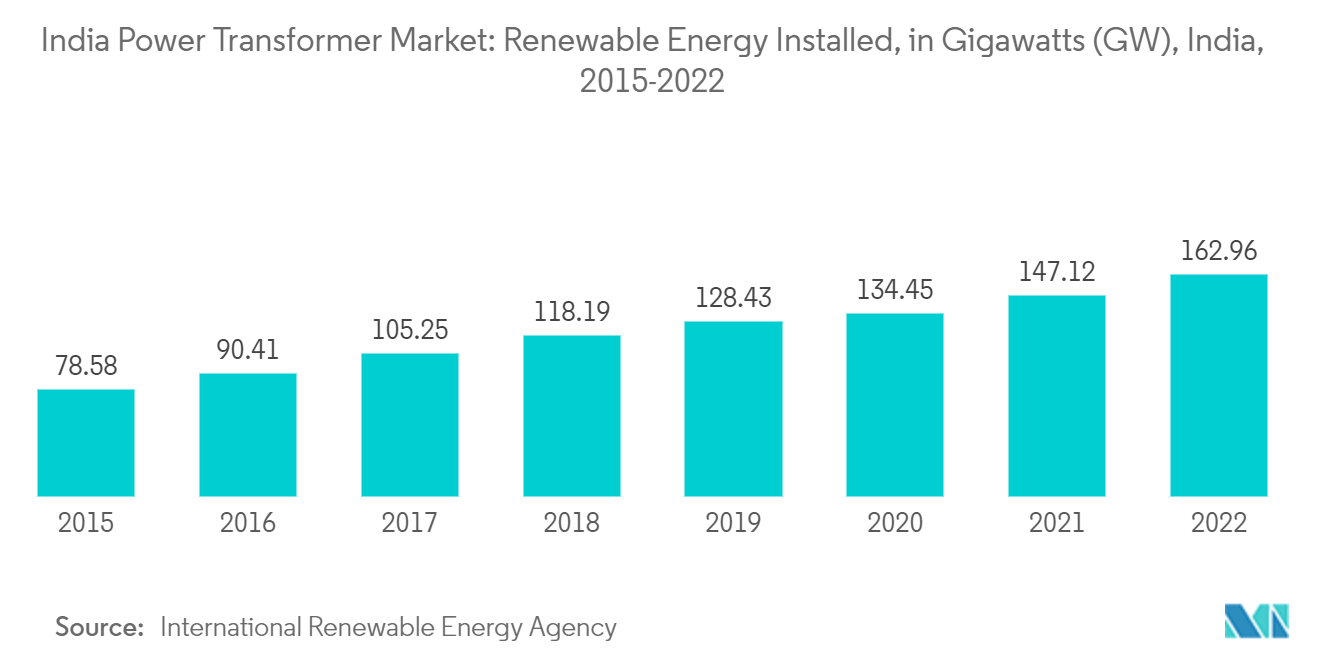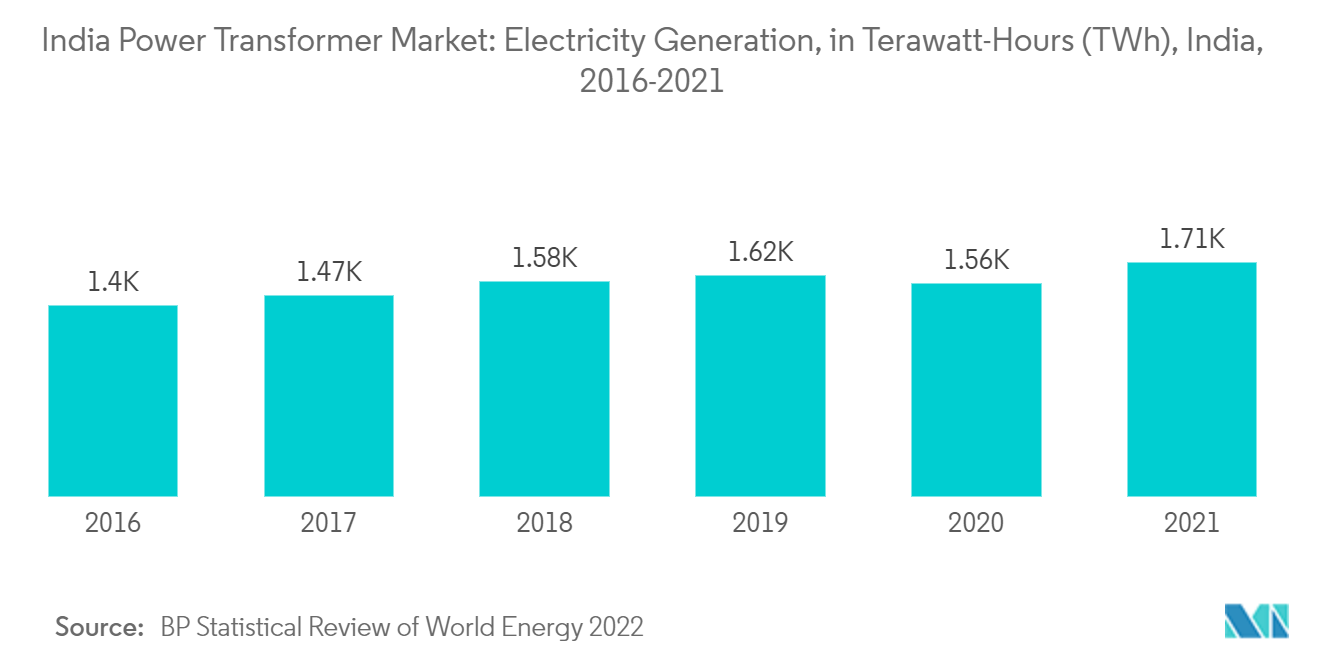Market Trends of India Power Transformer Industry
Small Capacity Segment Expected to be the Fastest Growing Market
- The power transformer transfers electrical energy in any electrical or electronic circuit between the generator and the primary distribution circuits. These transformers are used in distribution systems to interface step-up and step-down voltages.
- Because of its rapidly increasing urbanization and industrialization, India is expanding its existing transmission and distribution system by laying new transmission lines and installing new substations to fill the energy demand-supply gap, which will likely drive the market.
- Moreover, a rapid increase in renewable energy installations at different sites requires step-up and step-down transformers of the transferred electrical voltage. It will likely drive the market. Most solar and wind energy use small-capacity transformers to transfer electricity into the country's grid. In 2022, the total renewable energy installation in the country was 162.96 GW, which is higher than its installation in 2021, 147.12 GW.
- In March 2022, Smart Power India (SPI) signed a non-financial and non-commercial memorandum of understanding (MOU) with Adani Solar to ensure electricity access and support the energy transition in rural areas in India. The MOU aims to promote solar rooftop panels usage and achieve 5 GW of solar deployment in the coming years through Adani Solar's channel partners in rural and peri-urban areas of Uttar Pradesh (UP), Bihar, Jharkhand, and Odisha.
- Hence, owing to the above points, the small-capacity transformer will likely be the fastest-growing segment in the Indian power transformer market during the forecast period.

Government Policies Expected to Drive the Market
- India's power sector is undergoing a wide-scale transformation because the country faces steep electricity demand growth rates. Several parts of India witness high power cuts due to the growing demand for electricity and the supply gap. To address the issue of electricity reliability, the government implemented policies to increase electricity generation and encourage consumers to reduce their consumption during peak hours.
- In recent years, the government launched several schemes, such as the Deen Dayal Upadhyaya Gram Jyoti Yojana (DDUGJY), Integrated Power Development Scheme (IPDS), and National Electricity Fund (NEF). It is to improve the distribution sector in rural and urban areas, expected to drive the demand for power transformers in India.
- Moreover, transformers produced in the country were brought under mandatory Bureau of Indian Standards (BIS) certification, resulting in product standardization. It led to quality improvement and reduction of failure in transformers. These transformers were brought under a mandatory BEE star labeling scheme, which resulted in the use of modern technology in manufacturing energy-efficient transformers.
- In 2021, the electricity generation for India was about 1714.8 TWh, which was higher than what the country produced in 2020, 1563.3 TWh. The increase in electricity generation exhibits an increase in the power generation capacity, which is likely to use new power transformers to transmit electricity to the grids.
- The government aims to achieve 500 GW renewable power generation capacity by 2030. As a result of this ambitious goal, the renewable energy sector is expected to dominate the power generation sector's growth during the forecast period.
- Hence, owing to the above points, government policies are expected to drive the Indian power transformer market during the forecast period.


